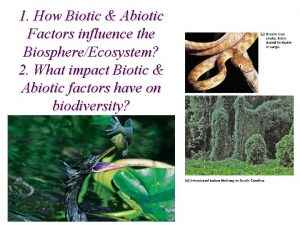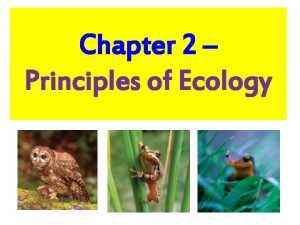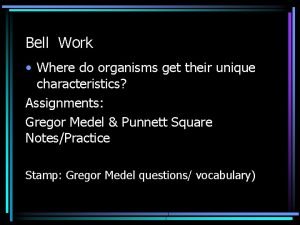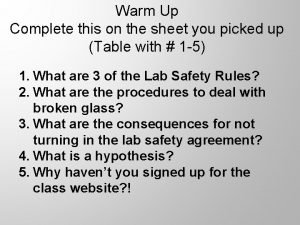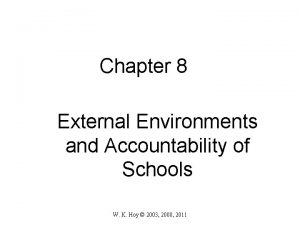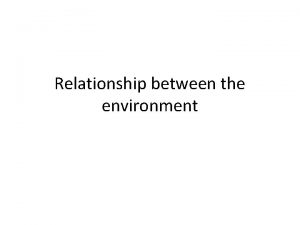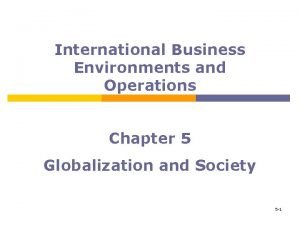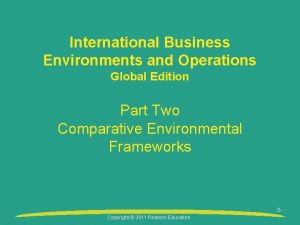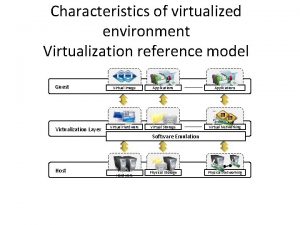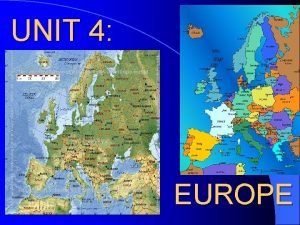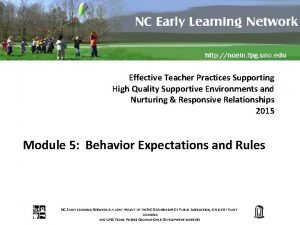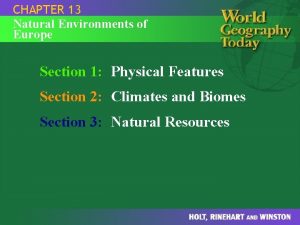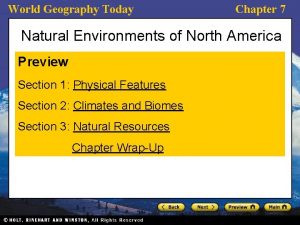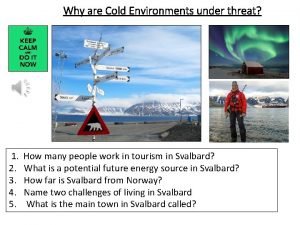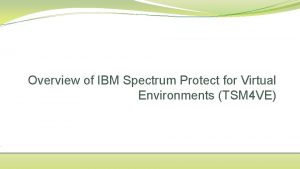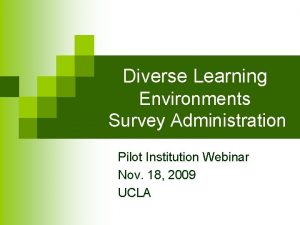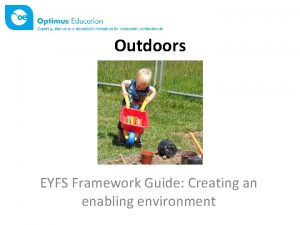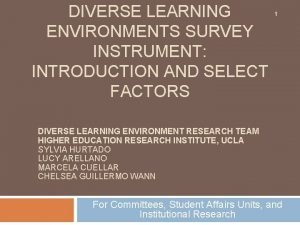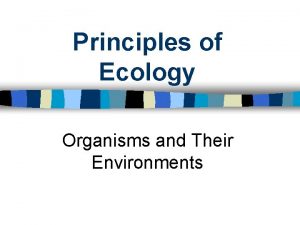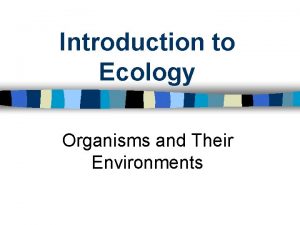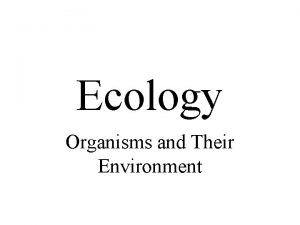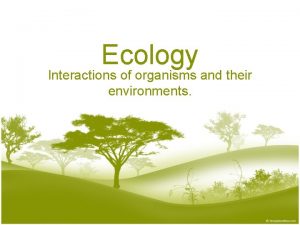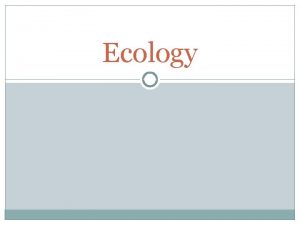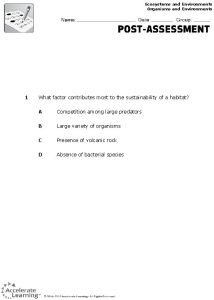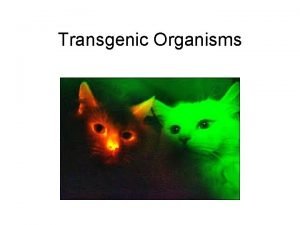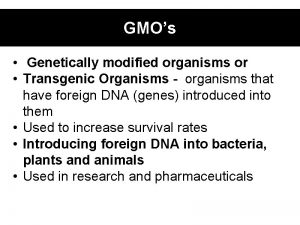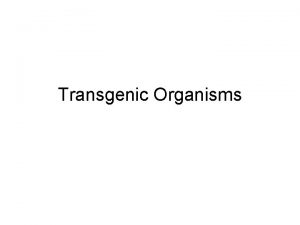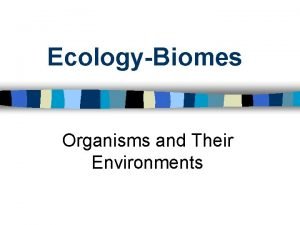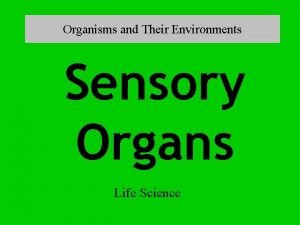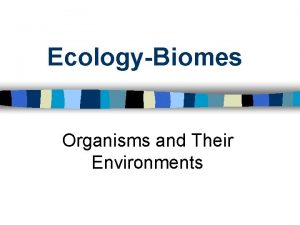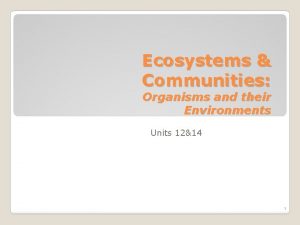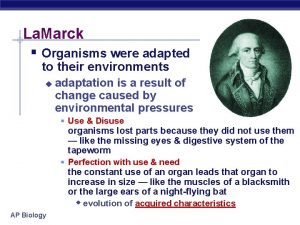Ecology Organisms and Their Environments Ecology n The




















































- Slides: 52

Ecology Organisms and Their Environments

Ecology n. The study of the interactions of organisms and their environment

Biotic Factors All the living organisms that inhabit an environment. n Bio = life tic = pertaining to. n Animals, plants, fungi, bacteria, protists n

Abiotic Factors All the non-living parts of the environment n A = not/without, bio = life n Examples = soil, rocks, water, minerals, temperature n

NOTE: n All organisms depend on others for food, shelter, reproduction and protection. We must study an organism’s relationship with other organisms at different levels and see how different factors affect them.

Levels of Biological Organization

Organism

Population n. A group of organisms of one species that interbreed and live in the same area.

Community n. A collection of populations that interact with one another.

Ecosystem n Interactions of a community and its abiotic factors

Biome large community of plants and animals that occupies a distinct region.

Biosphere n The portion of the Earth that supports life. n Many different environments exist here. n Bio = life

Niche vs. Habitat

Niche n The role a species plays in a community. n Includes the space, food, and other conditions the organism needs to survive.

Habitat n The place where the organism lives.

NOTE: n Several species may share a habitat, but the food, shelter, and resources of that habitat are divided into separate niches.

Interactions between Organisms Aka relationships

Autotrophs n Organisms that use solar energy to make their own food. n Auto = self n Also called Producers

Heterotrophs n Organisms that depend on other organisms for food and energy. n Hetero = other n Also called consumers

5 Types of Heterotrophs

Herbivores n Eat only plants

Carnivores n Eat other heterotrophs

Scavengers n Eat organisms that are already dead

Omnivores n Eat both animals and plants n omni = all

Decomposers n Absorb nutrients from dead organisms n Fungi, Bacteria

Competition Organisms of the same or different species attempt to use an abiotic or biotic resource in the same ecosystem.

Predation n An interaction in which one organism captures and feeds on another organism.


Symbiosis n Close and permanent relationships between organisms

Commensalism n One species benefits and the other is not harmed or benefited.

n Crab sheltering in carpet of a sea anemone

Mutualism n Both species benefit.

n Golden damselfish being cleaned by 2 different cleaner fish- both parties benefit.

Parasitism n One species benefits and the other is harmed.

n Mosquitoes are a parasite. They benefit from our blood and we are harmed by the bite and/or transmitted disease.

n These are common parasites. n Lice, Hookworms, Fleas, Ticks, Leeches

Energy in Ecosystems Note: Organisms interact in order to obtain energy and resources necessary to stay alive.

Energy Flow n Energy flows thru an ecosystem in one direction: sun autotroph heterotroph

Food Chain n. A model that shows how matter and energy move through an ecosystem. It has arrows that show the direction that energy is being transferred.

FOOD CHAIN

Trophic Level n. A feeding step in a food chain that represents each organism.

4 3 2 1

Can you name the trophic levels below? ? Producer Primary consumer Secondary consumer Tertiary consumer

Food Web n Shows all the possible feeding relationships at each trophic level in a community.


Ecological pyramids n Diagram that shows the relative amounts of energy or matter contained within each trophic level in a food chain or food web. n 3 types

Energy Pyramid of Energy Heat 0. 1% Consumers n 1% Consumers 10% Consumers Heat Pa dec rasit lev omp es, s el. ose cav rs eng fee ers da , a t e nd ach 100% Producers n 10% Rule - Only about 10% of energy available within one trophic level is transferred to organisms at the next trophic level The rest is lost as heat


Pyramid of numbers Pyramid of Numbers Fox (1) n Based Birds (25) Grasshoppers (250) Grasses (3000) on the number of individual organisms at each trophic level

Biomass Pyramid n The total amount of living tissue within a given trophic level is called biomass. n A pyramid of biomass represents the amount of potential food available for each trophic level in an ecosystem.


NOTE: n Energy and matter are constantly being recycled. A balance of everything going on in an ecosystem is called HOMEOSTASIS.
 Principles of ecology chapter 2 section 2 answer key
Principles of ecology chapter 2 section 2 answer key Principles of ecology organisms and their relationships
Principles of ecology organisms and their relationships Unicellular/multicellular
Unicellular/multicellular Why do organisms interact with other organisms
Why do organisms interact with other organisms Levels of organization in the biosphere
Levels of organization in the biosphere Chapter 2 section 1 organisms and their relationships
Chapter 2 section 1 organisms and their relationships Principles of ecology section 2 flow of energy
Principles of ecology section 2 flow of energy Chapter 2 principles of ecology answer key
Chapter 2 principles of ecology answer key 5 levels of organisms
5 levels of organisms Chapter 2 section 1 organisms and their relationships
Chapter 2 section 1 organisms and their relationships Where do organisms get their traits?
Where do organisms get their traits? Where do all organisms get their energy
Where do all organisms get their energy Method of grouping organisms based on their similarities
Method of grouping organisms based on their similarities Organisms that make their own food
Organisms that make their own food International business: environments & operations
International business: environments & operations Internal and external environment of the school system
Internal and external environment of the school system Model-based reflex agent examples
Model-based reflex agent examples Relationship between micro market and macro environment
Relationship between micro market and macro environment International business environments and operations
International business environments and operations International business environments and operations
International business environments and operations Exercise in hot and cold environments
Exercise in hot and cold environments International business environments and operations
International business environments and operations Characteristics of server virtualization
Characteristics of server virtualization Business and business environment is
Business and business environment is Chapter 13 natural environments of europe
Chapter 13 natural environments of europe Peng cui tsinghua
Peng cui tsinghua Psychologically informed environments
Psychologically informed environments Psychologically informed environments
Psychologically informed environments Creating supportive environments smoking
Creating supportive environments smoking High quality supportive environments
High quality supportive environments Chapter 13 natural environments of europe
Chapter 13 natural environments of europe Jonassen constructivism
Jonassen constructivism World geography
World geography Why are cold environments under threat
Why are cold environments under threat Spectrum protect plus knowledge center
Spectrum protect plus knowledge center The actors and forces outside marketing
The actors and forces outside marketing Information-intensive operating environments
Information-intensive operating environments Story openers
Story openers Marketing environments
Marketing environments Diverse learning environments survey
Diverse learning environments survey Enabling environments eyfs
Enabling environments eyfs Diverse learning environments survey
Diverse learning environments survey Prologue of romeo and juliet in modern english
Prologue of romeo and juliet in modern english Hát kết hợp bộ gõ cơ thể
Hát kết hợp bộ gõ cơ thể Frameset trong html5
Frameset trong html5 Bổ thể
Bổ thể Tỉ lệ cơ thể trẻ em
Tỉ lệ cơ thể trẻ em Gấu đi như thế nào
Gấu đi như thế nào Tư thế worm breton
Tư thế worm breton Chúa yêu trần thế
Chúa yêu trần thế Môn thể thao bắt đầu bằng chữ f
Môn thể thao bắt đầu bằng chữ f Thế nào là hệ số cao nhất
Thế nào là hệ số cao nhất Các châu lục và đại dương trên thế giới
Các châu lục và đại dương trên thế giới








